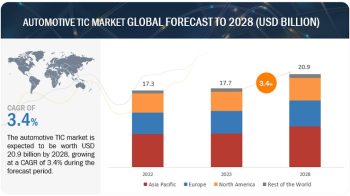Wireless Charging Market (2012-2017) – Global Forecast and Analysis by Technology (Inductive, Magnetic Resonance, Radio Frequency (RF), Microwave, Optical Beam), Products (Pads and Receivers for Smartphones), Applications (Smartphones, Industrial, Medical, Military, Electric Vehicles)
Charging the battery of any electronic device without the use of cables and cords constitutes wireless charging. The concept of wireless charging was introduced by Nikola Tesla in the year 1899 where he demonstrated transmission of 100 million volts of electricity across 26 miles. This age old technology has come into being for charging consumer electronics, especially for smartphones as of 2011.
Wireless Charging Market
Published: April 2012
No. of Pages: 206
 |
|---|
Since the market is at a nascent stage, there are a number of opportunities in the market; such as having wireless charging embedded in commercial outlets such as café’s, cinema halls, airports, and so on. Also, embedding receivers in the smartphones eliminates the need of using a sleeve. Charging electric vehicles wirelessly is a very prominent field as of today and gaining momentum. There are several universities such as Stanford University (U.S.), Clemson University (U.S.) and companies conducting researches on the same.
The companies, universities, and research institutes are conducting extensive R&D on the same and trying to embed the receiver coils in the phone, which will eliminate the need for the sleeve as well. Standards and interoperability are the major concerns in the market as of today. Since the market is in its infancy; there are no set standards for the same.
The Wireless Power Consortium established a standard for interoperability named the Qi standard, which enables charging pads and devices with Qi certification to charge together. There are other emerging standards as well for charging the devices wirelessly.
The medical and the military applications contribute a very minor percentage to the wireless charging market as of 2011 and are expected to increase at a very slow rate. These markets are very small as of today due to the feasibility and the acceptability of the product. Since the concept of wireless charging is new, the companies are carrying out R&D and working towards enabling the users to accept the product.
The global wireless charging market is expected to reach $7.161 billion in 2017 from $456.86 million in 2011 at an estimated CAGR of 57.46% from 2012 to 2017. Japan ranks first in the wireless charging market. The North American market will take a couple of years to grow due to the slow acceptance of the concept of wireless charging. The consumers are yet in the learning curve of the concept and will take time to accept this new technology.
Scope of the report
This wireless charging market research report categorizes the global market on the basis of different products the companies offer for charging smartphones wirelessly, the different technologies that are used for charging electronic devices wirelessly, and various applications that wireless charging caters to.
On the basis of products
The wireless charging market for smartphones in the product segment consists of wireless charging pads for smartphones as well as receivers for charging mobile phones.
On the basis of technology
The report describes five different types of technologies that are used for the wireless charging market; namely inductive coupling technology, magnetic resonance technology, radio frequency (RF) technology, microwave technology, and optical beam technology.
On the basis of applications
Five various areas of applications are covered in the report, namely; smartphones, industrial applications, military applications, medical applications and wireless charging solutions for electric vehicles.
On the basis of geography
- North America
- Europe
- Japan
- Asia-Pacific (Excluding Japan)
- ROW
Each section will provide market data, market drivers, trends and opportunities, key players, and competitive outlook. It will also provide market tables for covering the sub-segments and micro-markets. In addition, the report provides more than 20 company profiles covering all the sub-segments.

